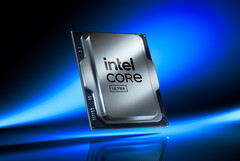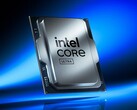Intel’s desktop Core Ultra 200S “Arrow Lake-S” processors may not have caused a rush among DIY builders at launch, but fresh testing suggests the platform has aged far better than expected. A year of software development has delivered noticeably higher performance than it did at release — all while consuming much less power.
According to new Linux benchmarks from Phoronix, the flagship Core Ultra 9 285K is about 9% faster on average than it was a year ago, purely thanks to software optimizations. Just as important, this uplift doesn’t come at the cost of efficiency. The same chip now uses only around 85% of the power measured in the original tests — roughly a 15% reduction in power consumption.
Phoronix reports no regressions in any of the workloads tested, which spanned a broad mix of real-world scenarios: code compilation, compression, web benchmarks, HPC, and simulation tasks, among others. For Intel, this is an encouraging sign. Arrow Lake launched to mixed reviews, particularly among DIY desktop builders, but the latest results indicate that the platform benefits substantially from maturing microcode, kernel adjustments, and compiler-level optimizations.
The big question now is how much of this tuning is also reflected on Windows, where most gamers and mainstream users live. To improve performance in Windows, Intel previously released the Application Performance Optimizations (APO) software stack. This technology, implemented at the driver level, automatically identifies software and its needs, allocating CPU resources in real time to optimize application performance. There are no exact independent figures yet, but productivity should have improved as well. According to Intel, its program stack has already delivered up to 14% higher frame rates and up to 21% better 1% lows in some Windows 11 gaming workloads.
Looking ahead, Intel is preparing an “Arrow Lake Refresh” lineup for the first quarter of 2026. Those chips could ship into a much more mature software environment from day one. Maybe something like Intel’s APO will be applied out of the box.
















